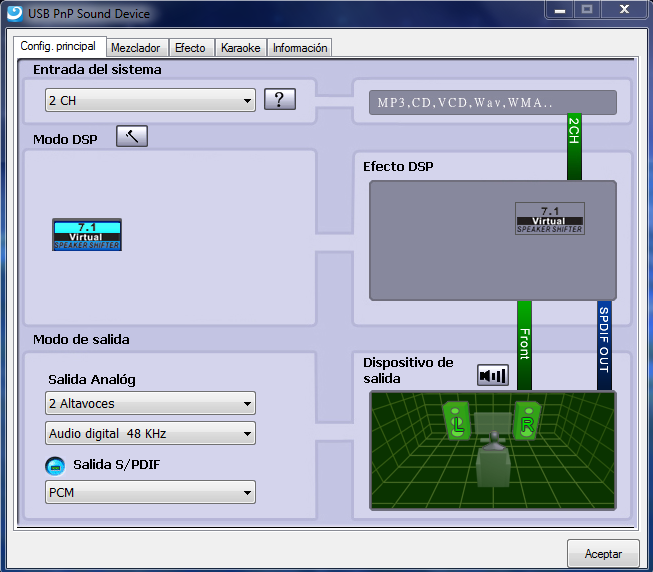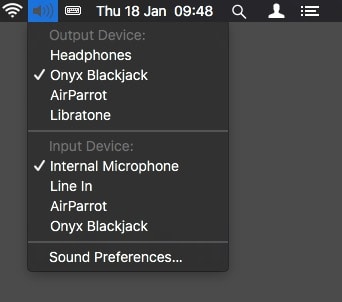- Windows 10 Doesn't Install Specific Drivers For USB Audio ...
- Usb Pnp Sound Device Drivers For Mac Os
USB Audio Driver allows you to use your laptop as a synthesizer or digital effect-box. Did you notice there's some delay related to the computer's soundprocessing? The USB ASIO driver is the solution. It enables buffersizes down to 32 samples (0.73 ms) and does an ultra highspeed USB audio connection, bypassing the operating system's audio. If the device is not yet connected, first install the device-specific driver, such as by using the appropriate installer. After the device-specific driver is installed, Windows 10 will select that driver instead of the standard USB audio 2.0 driver when you first connect the device. About Sound Card Drivers: Usually, Windows operating systems apply a generic audio driver that allows computers to recognize the sound card component and make use of its basic functions. When enabled by proper files, the characteristics of the sound card (like model, manufacturer, number.

Specific for Gaming
The SteelSeries 5Hv2 USB is the first headset ever, to focus on enhancing certain gaming related sounds for optimal information to the wearer. Pitch sounds like footsteps and reloading are carefully enhanced to give you the information you need to win.

USB Soundcard
The USB 2.0 sound card that is featured with the 5Hv2 USB has a 12-channel equalizer and 7.1 Virtual Surround sound. This device really makes a difference in terms of the USB sound card, giving you the sound you are used to, independent of any other sound card or other computers or devices.
Easy to Carry
The SteelSeries 5Hv2 USB is especially popular and loved at LAN-events and internet cafés around the world. With the ability to dismantle the headset into 3 pieces for easy carrying and transportation makes it the first choice headset for many gamers.
Serious Comfort
The 5Hv2 USB has XL cloth padded ear cups for maximum comfort when gaming for a long period of time. Aside from being comfortable, the ear cups also serve as noise reducers so that you're able to focus on your game.
Retractable Microphone
The retractable microphone in the left earcup makes this headset perfect for gaming without having the microphone being an annoying device hanging out all the time.

Specific for Gaming
The SteelSeries 5Hv2 USB is the first headset ever, to focus on enhancing certain gaming related sounds for optimal information to the wearer. Pitch sounds like footsteps and reloading are carefully enhanced to give you the information you need to win.
USB Soundcard
The USB 2.0 sound card that is featured with the 5Hv2 USB has a 12-channel equalizer and 7.1 Virtual Surround sound. This device really makes a difference in terms of the USB sound card, giving you the sound you are used to, independent of any other sound card or other computers or devices.
Easy to Carry
The SteelSeries 5Hv2 USB is especially popular and loved at LAN-events and internet cafés around the world. With the ability to dismantle the headset into 3 pieces for easy carrying and transportation makes it the first choice headset for many gamers.
Serious Comfort
The 5Hv2 USB has XL cloth padded ear cups for maximum comfort when gaming for a long period of time. Aside from being comfortable, the ear cups also serve as noise reducers so that you're able to focus on your game.
Retractable Microphone
The retractable microphone in the left earcup makes this headset perfect for gaming without having the microphone being an annoying device hanging out all the time.
Volume Control
The braided cord gives the 5Hv2 USB increased durability and also features an integrated manual volume control. This is especially handy when you don't have access to regulating volume with software settings.
Windows 10 Doesn't Install Specific Drivers For USB Audio ...
The Numbers
- Headphones
- Frequency response: 16 – 28.000 Hz
- Impedance: 40 Ohm
- SPL@ 1kHz, 1 Vrms: 110 dB
- Cable length: 1 + 2 = 3 m (9,8 ft.)
- Jacks: 3,5 mm
- Microphone
- Frequency response: 75 – 16.000 Hz
- Pick up pattern: Uni-directional
- Sensitivity: -38 dB
- Impedance: 2K Ohm
- Soundcard
- USB: 2.0
- Surround sound: Virtual 7.1
- Equalizer: 12 channels
- Jack: 2 x 3,5 mm (USB cable included)
- Operating systems: Win XP/Vista/Win 2000/Win 98/Win ME
Usb Pnp Sound Device Drivers For Mac Os
Last updated: 16 May, 2020 Copy Copied In rare instances, you may find that after following the instructions as described in the User Manual for your SuperSpeed USB 3.0 to HDMI/DVI Adapter (SKU: 103046) you are unable to get audio, video, or both. Performing the following processes listed below will help to determine if there is a configuration issue or if your adapter is defective. For the purposes of this troubleshooting guide it is assumed that your device has a compatible resolution. It may seem obvious, but for any of the issues listed below be sure to check your HDMI connections. Make sure your HDMI cable is functioning properly by testing with another device. We also recommend connecting with a shorter HDMI cable as longer HDMI runs can affect performance. HDMI cables of inferior quality will often affect performance, so be sure that you are using a reputable brand's cable. Another often overlooked HDMI issue is a failed HDMI port. If your display has multiple HDMI ports try your adapter on one of the other ports. Symptom: no audio or video Install the most current drivers We recommend installing the latest drivers from DisplayLink's website: http://www.displaylink.com/downloads/mac_downloads.php. Cable Matters recommends installing the most recent non-beta OS version available. The compatible version of the OS can be found below the download link of the driver (highlighted in picture above). If your OS version is listed under the beta version but not listed in any other driver version we recommend using the most recent non-beta version available. For example, using the photo at left for reference we would recommend installing version 2.4 first if you have El Capitan 10.11 on your machine before attempting to use the Beta software. If your adapter was functioning properly and you are now experiencing issues after upgrading your macOS, you'll need to uninstall any previous versions of the drivers and install the most current version for your OS. Recent versions of the macOS require the most updated drivers to function properly. After installing the driver and restarting your device, the adapter should work properly. Symptom: no audio on Mac or second display Check Sound Settings After driver installation the audio should automatically be configured to output at the display. In many cases the display is a TV. If you want to play your audio through your TV you'll need to make sure the television is set as the output device:
If you are connecting using the included DVI adapter or you are connecting to a video only display (like a projector) you will need to make sure that your built-in speakers are set as the output device for audio. Using the same steps above, select your Mac's speakers as the audio output device. Symptom: no desktop on second display Check Video Settings If you do not see your desktop on the second display it is likely that your HDTV uses the external HDTV as an extension. In this configuration, drag your content all the way across your display edge (right edge) and it will appear on your second display. You can set your Mac to mirror display via the Display Preference Panes:
We recommend using the HDTV as an extension as you will gain more display. Symptom: video on second display does not fit screen If you find that the image on your second display does not fit the screen size correctly it could be that the HDTV is overscanning incorrectly. Basically, this occurs because your Mac thinks it knows what the image should look like based on the information it is getting from the TV. If that information is not interpreted correctly you get an image that is too small or large to fit in the display area on your HDTV. To correct this:
Other considerations If you experience an issue not explained in the above scenarios, please contact us at support@cablematters.com. In your message be sure to provide us with the order number associated with your purchase, the model of your Mac device, the OS version you are using, and the version of the DisplayLink driver that you have installed. This information will help us to investigate the issue more quickly and keep you from repeating troubleshooting steps. For more information about this product including the driver and user manual, please visit the item page on our website Last updated: 16 May, 2020 Tags |
